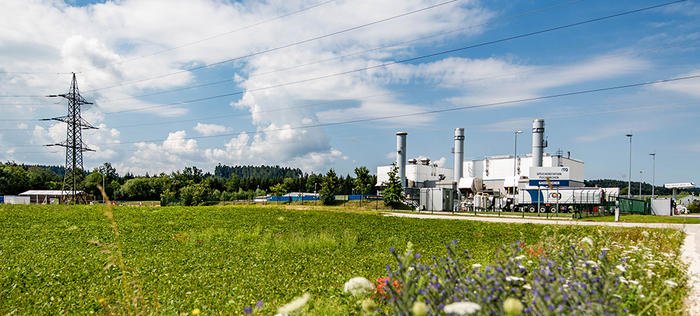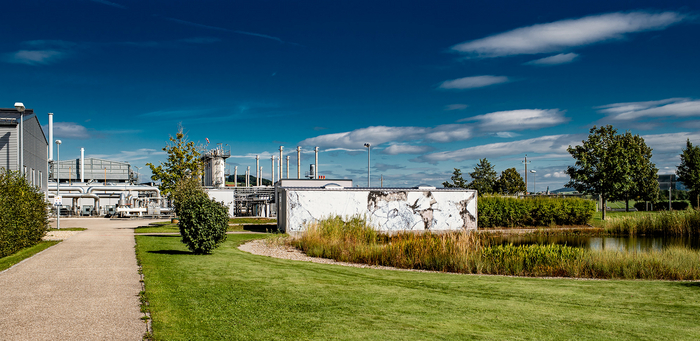

Together with safety, environmental protection and responsible stewardship of Austria’s natural resources are paramount in all of our activities and work processes. In order to underpin a systematic approach and continuous improvement, a responsible attitude to the environment is a core element of our HSE management system.
![]() Our goal is to minimise the impact of our operations on the environment, and to embed climate protection measures in all of our operational processes.
Our goal is to minimise the impact of our operations on the environment, and to embed climate protection measures in all of our operational processes.
Environmental protection is built into the planning process for all plant construction projects. A combination of technical and organisational countermeasures are taken to guard against potential risks. Our facilities are monitored using intelligent systems that immediately spot deviations from normal operational status, and trigger automated responses that are followed up with prompt action by our well-trained staff. RAG uses state-of-the-art maintenance and management systems to monitor preventive environmental protection activities (see ‘Safe plants and work processes’ for further details).
On a basic level, RAG’s HSE Department is responsible for the HSE management system. When planning and implementing projects, the project managers must take the related environmental issues into account, in consultation with the Regulatory Liaison and Business Environment Management Department. In some areas, we draft in external support – the appointment of an external waste officer as a waste management consultant being a case in point.

Preserving biodiversity and natural ecosystems is an important part of the fight against climate change, as well as playing an essential role in food security and the wealth and economic prosperity of our society. We recognise that our activities have an impact on the landscape, on habitats and on the use of natural resources. To keep this to an absolute minimum, protecting nature (natural/social environment) is taken into account for each project in the course of the environmental analysis. Before a gas field development can go ahead, the site is carefully selected so as to minimise the amount of land used, as well as emissions, land clearance and intrusion into the landscape.
The findings of the environmental analysis are then used to shape the actual plan, after which a suitable solution is identified before appropriate measures are taken in consultation with all of the landowners and communities concerned, as well as with local authorities, nature conservation experts and planners. We also aim to steadily extend our cooperation with stakeholders to take account of their varying requirements and interests from an early stage.
Every activity requires official authorisation, with mining activities in particular falling under the Mineral Resources Act. At this stage, the prerequisites for a case-by-case assessment for the performance of an environmental impact assessment according to the Umweltverträglichkeitsprüfungsgesetz (Environmental Impact Assessment Act) 2000 are reviewed for each mining installation and the results included in the submission dossier. In addition, depending on the project and the respective location, permits are also required under the terms of various Austrian laws including the Natur- und Landschaftsschutzgesetz (Nature and Landscape Conservation Act), the Wasserrechtsgesetz (Water Rights Act) and the Forstgesetz (Forestry Act). The legal areas involved are examined very closely in the course of the environmental analysis for each individual project with a view to keeping the impact of any activities as low as possible. Depending on the scale of the project, calculations of emissions such as noise and air pollution are carried out and these issues are added to the procedures if it is deemed necessary.
It goes without saying that we always adhere to the strict legal regulations and voluntarily go beyond them. At RAG, the overarching aim is to prevent any intrusion into the natural environment to the fullest extent possible, to avoid activities located in or adjacent to protected and biodiverse areas, and to do our utmost to protect areas of high biodiversity.
If land clearing measures are required for a project, they are only approved for the area or areas where it is absolutely unavoidable. Areas temporarily affected by clearing are reforested with suitable species once construction activities are completed. For permanent clearance, compensatory measures are carried out to offset the loss of forested land and to safeguard the natural effects of the forest. This can take the form of offsetting forestation on another plot of land and bearing all the associated costs relating to protection, improvement and maintenance measures, or payment of compensation to fund forestation projects elsewhere in accordance with the Forestry Act.
Depending on the size of the project, mitigation measures are already taken into account while the conservation procedure is still in the planning stage. These can be compensatory measures such as groups of shrubs or hedges planted directly on site, or compensatory payments to conservation projects on land in nature conservation areas (such as moorland regeneration schemes).
To prevent the introduction of neophytes, areas such as depressions and humus storage areas – which arise to varying degrees around mining facilities due to the topographical conditions – are professionally rewilded.

The presence of certain geological structures has a direct bearing on the siting of mining facilities. This means that mining facilities – unlike other types of facility – can or must only be built where the corresponding rock structures occur below ground and can be reached and used. Even so, RAG‘s overarching priority in this respect is not to build its own, or rented and managed operating sites in – or next to – protected areas and land with high biodiversity. This also applies in particular to habitats and areas that are home to protected species.
Only one of RAG’s operational buildings is located on the fringes of a groundwater protection area: the plant at the Oberkling underground gas storage facility in the Lachforst groundwater protection area. All measures requiring notification or approval under the applicable Protected Area Order were evaluated in detail before the necessary procedures were implemented in line with the statutory water rights provisions.